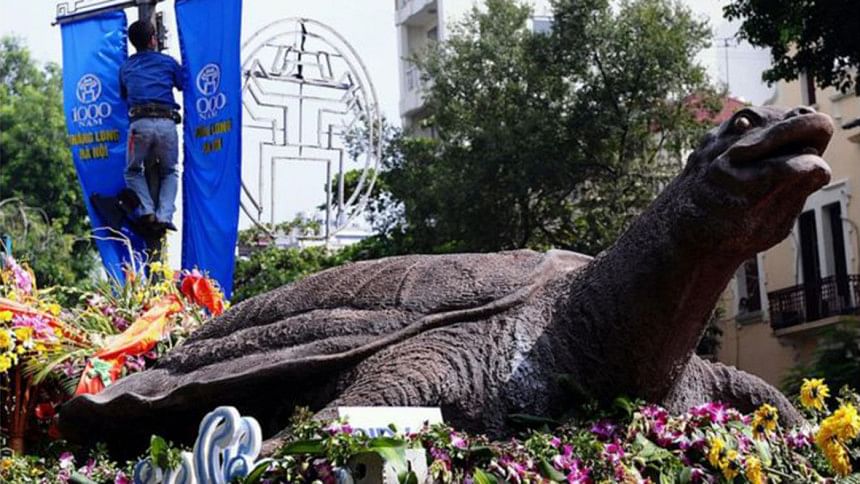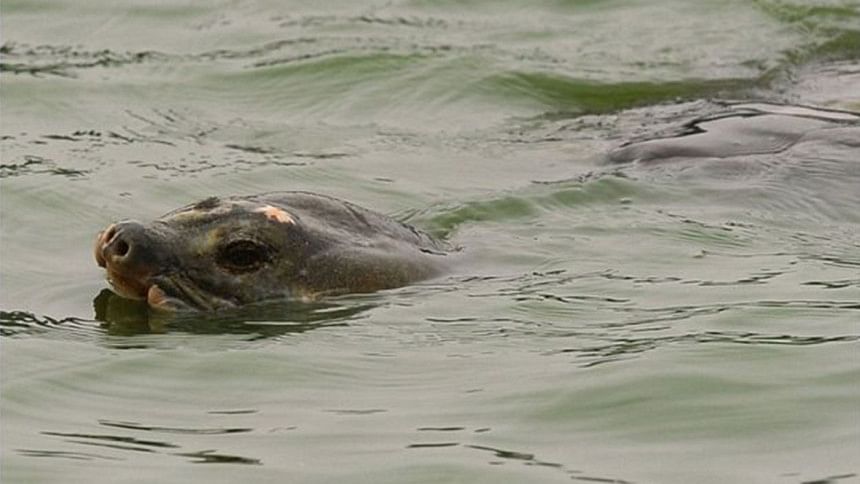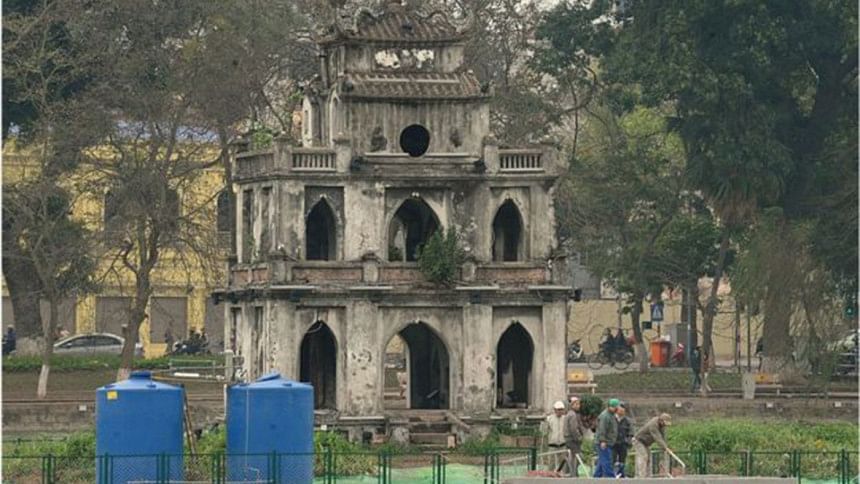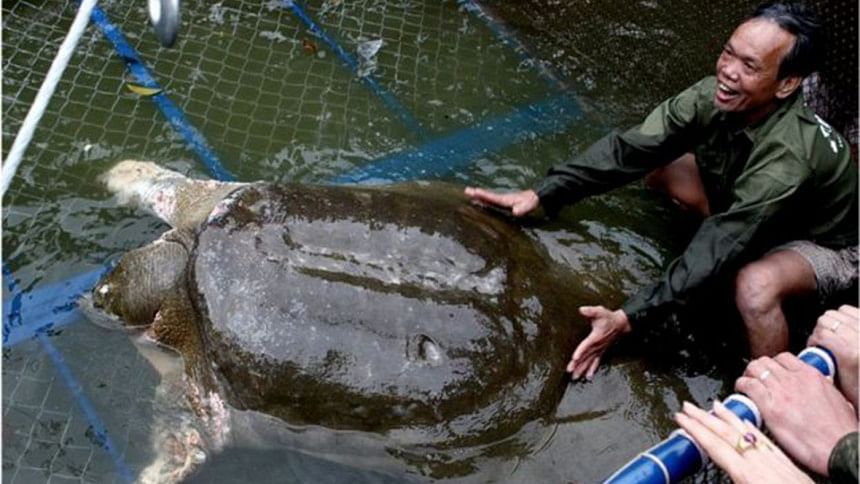How the death of turtle has rocked Hanoi

Vietnam is mourning an ancient turtle revered as a symbol of auspiciousness, whose death has shocked the country.
Thought to be one of only four living Yangtze giant softshell turtles, it was found floating in the Hanoi lake where it lived. Cause of death is unclear.
Some see the death as a bad omen for the ruling Communist Party. Its annual congress begins on Thursday and a change of leadership is expected.

Cu Rua, meaning great-grandfather though it was female, will be embalmed.
"Cu" is the Vietnamese word used to refer to old and revered people, giving some indication of the special place she occupied in the hearts of Hanoi's inhabitants.
And not only Hanoians - people from all over the country also used to come to Hoan Kiem lake in Vietnam's capital to try to catch a glimpse of her. Some even waited for days.

Social media in Vietnam has been flooded with posts lamenting her death, which came on a gloomy windy and wintry Tuesday afternoon.
Facebook user Nguyen Viet Nam said: "The turtle was a sacred animal for us Hanoians. Such sadness, such regret."
Some wondered whether the timing of the death was significant. Nguyen Thanh Ha: "Cu Rua has died! Is this a sign? Just when the Congress meets?"
Another Facebook user Dao Trung Thanh said: "So the Hoan Kiem Lake turtle has died. Maybe it is not a sign of bad luck. Maybe it is a sign of renewal and end of slow backwardness."
'Mythical creature'
Douglas Hendrie, a Hanoi-based wildlife expert, says Cu Rua was one of only four known living specimens of his kind in the world.

"But more than that, the turtle also had a significant historical, cultural and spiritual value for the Vietnamese," he adds.
Legend has it that the turtle - believed to be more than 100 and the oldest in Vietnam - was the incarnation of a mythical creature living in the lake in the 15th Century.
Local legend has it that Le Loi, a real figure from Vietnamese history who would become emperor of Vietnam, borrowed a magical sword from the Dragon King to fight against Vietnam's then Chinese oppressors.
After claiming independence for the Viets, he came to the lake and returned the sword to its divine owner via its disciple - a giant turtle which surfaced to take it from his hands before disappearing beneath the jade waters.
The lake duly became known as Hoan Kiem, or the Lake of the Returned Sword.
Scientists are not yet sure what killed Cu Rua - pollution, climate change or simple old age - but his body is being examined by experts. The authorities have already announced she will be preserved.
To many of Hanoi's residents, Cu Rua was more than a charming local character - her appearances at the same time as some of the country's biggest events, such as Hanoi's 1,000-year anniversary, were seen as auspicious - while her ailments were seen as ominous signs.
So her sudden death is certainly "viewed as a big concern", says Hendrie who has worked in Vietnam for two decades.
The newly appointed mayor of Hanoi, police general Nguyen Duc Chung, is said to have promptly visited the site which was quickly cordoned off.
The issue was so delicate that state censors briefly tried to prevent the news from being reported.
"To cheerfully welcome the party congress, newspapers and media please do not report on the turtle's death for now," the party's propaganda department instructed.
But a few hours later domestic newspapers were told they could report the death - as scientifically and objectively as possible, without speculation and using "sensitive photos".
The all-important congress of the Vietnamese Communist Party, which takes place every five years, opens on Thursday in Hanoi and the authorities are careful not to fuel any unfounded rumours around it.
"Is it a sign? I don't know," says Nguyen Duc Hung, a 27-year-old man from Thanh Hoa province.
Speaking on the phone from the paved bank of Hoan Kiem lake, Hung said his only regret was that he would not be able to see Cu Rua ever again.

 For all latest news, follow The Daily Star's Google News channel.
For all latest news, follow The Daily Star's Google News channel. 








Comments